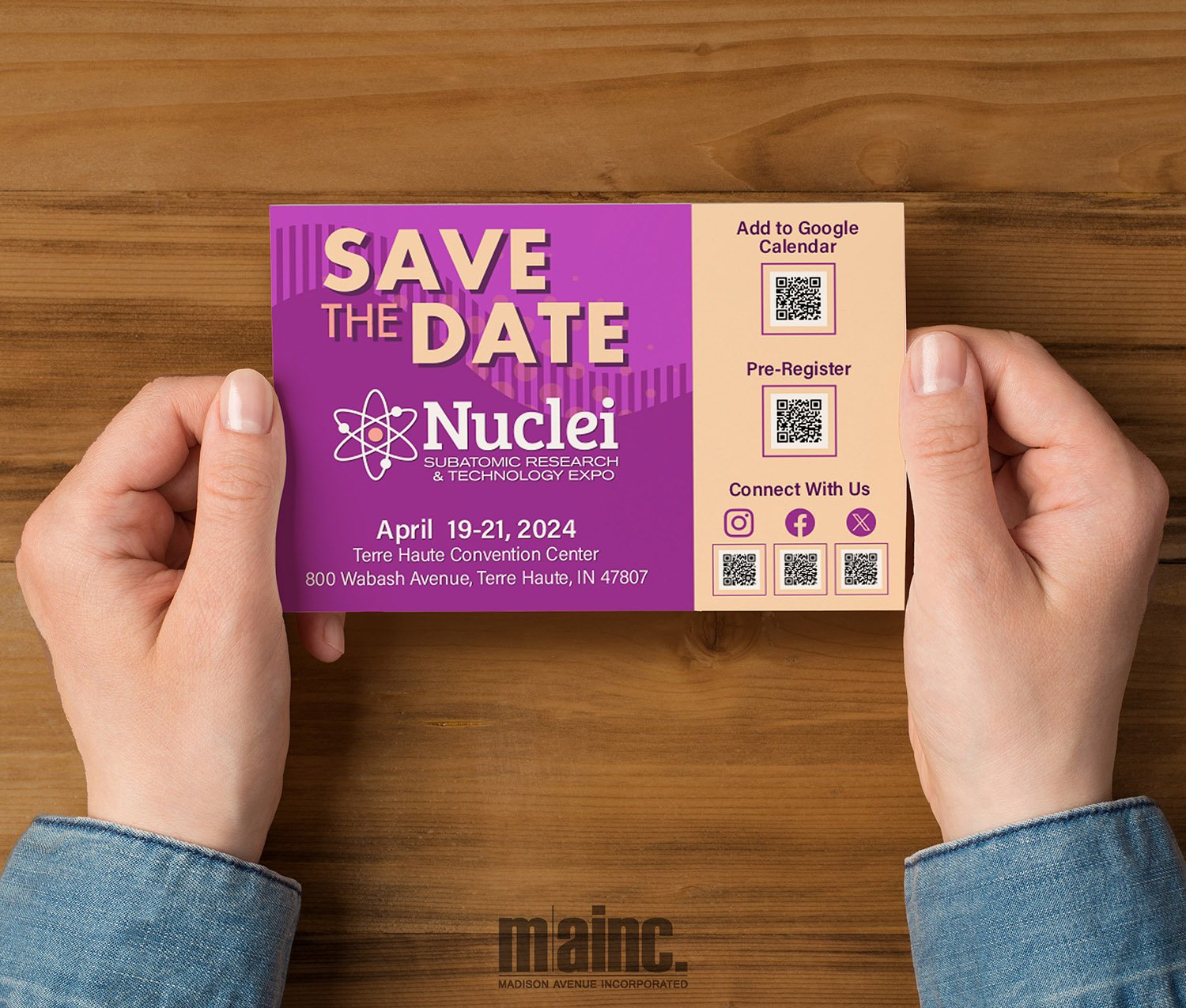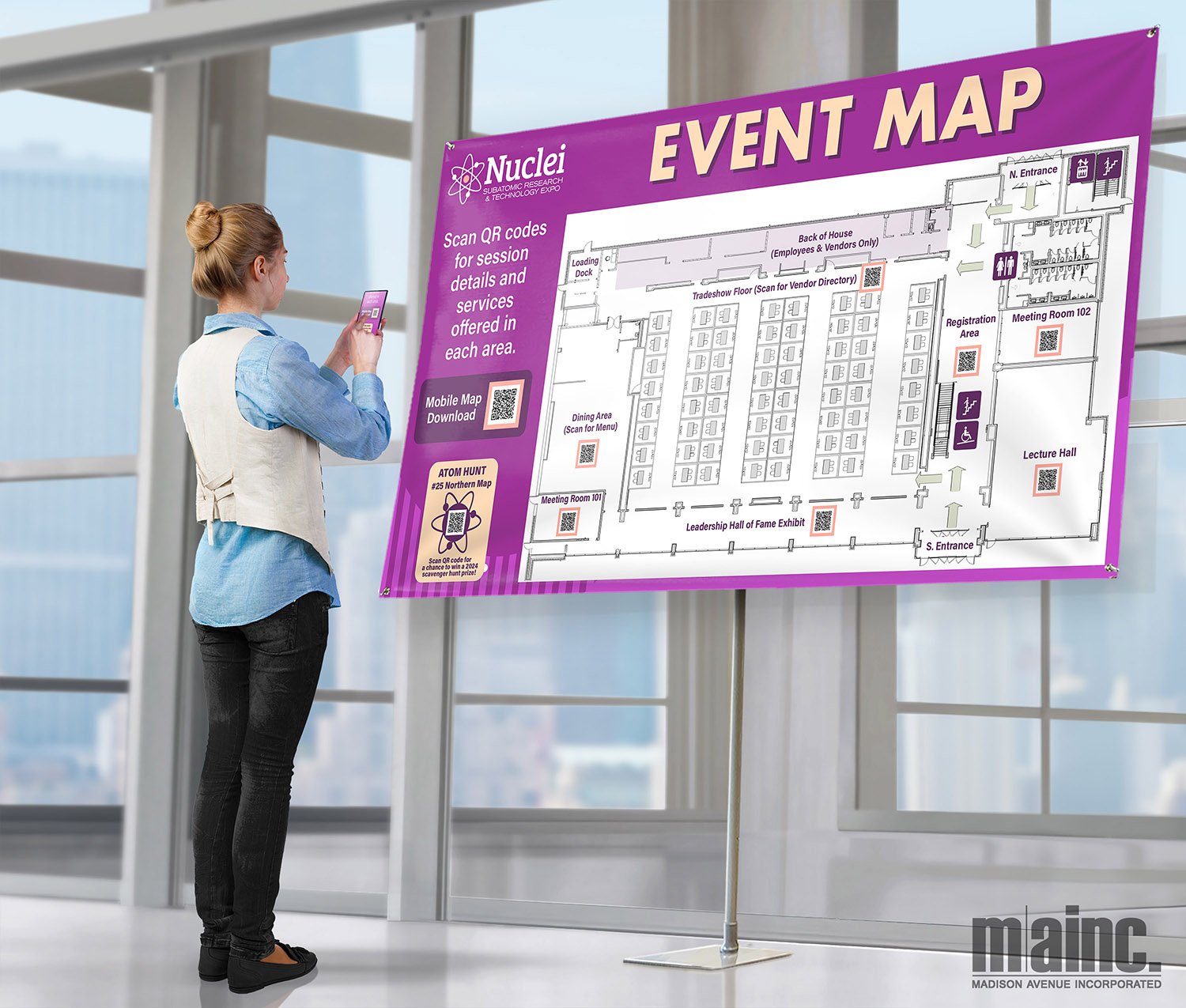When was the last time you scanned a QR code? Given the prevalence of these tools, chances are it was recently. Maybe you used one to access a restaurant’s menu, pull up a food truck’s Venmo to pay, or for one of the many applications in our day-to-day lives. In today's digital age, the concept of incorporating technology to streamline an experience is just about everywhere. Since QR codes are easy to make and even easier to use, they have become a powerful tool for event planners looking to enhance the attendee experience and streamline event management at every level. In this blog, we'll explore creative ways event planners can leverage QR codes at their meetings, with a focus on pre-event, on-site, and post-event strategies.
Pre-Event

- Ticketing and Registration: One of the simplest ways to use a QR code is for ticket generation. After guests register for your event, send an email with a QR ticket they can scan on-site. This cuts down on unnecessary paper waste, makes it much harder for your attendees to lose their tickets, and makes registration once on-site a breeze!
- Event Information: Include QR codes on promotional materials (e.g., flyers, emails) linking to event details, schedules, and maps. You can enable attendees to save event details to their calendars by scanning a QR code. This form of marketing is especially handy when you’re advertising your event at a tradeshow and need a simple way to convey a lot of information without requiring a prospective attendee’s email.
- Feedback and Surveys: Create QR codes for pre-event surveys to gather attendee preferences and expectations. Digital surveys make it easy to aggregate the data you collect for use on-site. Be sure to check out our Networking blog for some creative ideas on utilizing this data to facilitate meaningful connections at your event!
On-Site

- Registration and Session Check-In: As we mentioned previously, QR code tickets make it quick and easy to register once your guest has arrived on-site. You can extend this check-in to your breakout sessions as well! Use unique QR codes for speaker sessions, lectures, round tables, etc., that guests can scan to check in and get credit for attending specific sessions. Consider gamifying this and giving rewards to those who attend the most sessions or complete a particular track at your meeting.
- Networking: Because generating QR codes is so quick and easy, it’s possible to make unique codes for each of your attendees to include on things like name badges. This enables attendees to exchange contact information quickly by scanning each other's QR codes. You can do the same for each exhibitor, linking to their digital brochures or websites as a quantifiable way to help generate leads for your sponsors.
- Gamification: Incorporate QR codes into things like scavenger hunts, encouraging attendees to explore different areas of the event venue. You can also incorporate these into more passive, interactive activities like a “Walk Through Time” of your company’s history, where guests can scan codes to learn about important events or milestones in your brand’s past. Check out our Simple Switches Graphics Blog for ideas on how to best execute these types of interactive ideas!
- Interactive Sessions: Consider using QR codes to inject some immersive content into your sessions. Your speakers can include QR codes in their presentation slides, linking to additional resources, references, or interactive polls. This can encourage audience engagement and participation while providing them with important or educational supplementary materials as well.
- Real-time Performance: One of the cool things about QR codes is that their scans are collected in real-time, meaning you can get an idea of not only how many people are on-site for your meeting but also if you employ the previously mentioned QR codes at your sessions, you can get an idea of which content is performing the best. This type of information gathering is great because it allows you to tailor future content to topics that are most popular and important to your attendees.
- Maps and Seating Chart: QR codes are a great way to help your guests navigate your event. Scannable, interactive maps can let your attendees know exactly where they are at your venue, where bathrooms and food areas are located, and where particular sessions are scheduled to occur. You can also create smart seating charts for networking to kick off cocktail hours, pairing attendees with guests with similar interests to help break the ice and help make the conversation more organic.
- Branding: QR codes can be part of a brand itself, so don’t forget to incorporate these into event merch and giveaways. Print QR codes on tags, stickers, or cards and include them with your swagbags. This is particularly useful when you want to broadcast particular qualities about certain items (like eco-friendly promos) to bring some additional value to your giveaways.
- Minimize Idle Time: QR codes are also a great way to inject some interactive content into downtime into your events. Decorate your registration line areas with your sponsor’s logos and QR codes so attendees can learn more about your event partners while they wait. This is a great way to give your sponsors some added value and keep attendees engaged during otherwise idle time!
- Virtual Doorways: Even though the pandemic is over, hybrid and virtual events are still very much in demand, and QR codes can serve as gateways to all your virtual content. Send a schedule of presentations and breakout sessions with corresponding QR codes for each activity that virtual attendees can scan to be taken to a live stream of the content.
Post-Event

- Follow-Up Data Collection and Engagement: Including QR codes in your post-event emails for attendees is an easy way to gather post-event insights and analytics, such as attendance rates and session popularity. Using these surveys (along with your real-time on-site analysis) can help you improve your next event’s content.
- Social Media Integration: Encourage attendees to share their experiences by including QR codes linked to event hashtags or social media profiles. You can also use QR codes to share your photo collections and have guests find themselves!
- Post Event Resource: Link QR codes to recordings or summaries of event sessions for attendees to revisit or share with their teams who were unable to attend. You can distribute these codes on-site or send them out on a timed schedule after the event (this sort of gated release encourages on-site attendance).
So there you have it! By creatively incorporating QR codes into various aspects of event planning and management, planners can enhance the overall attendee experience, increase engagement, and streamline your on-site operation. Embracing this technology can take your events to the next level, making them more interactive, informative, and memorable for all involved!

